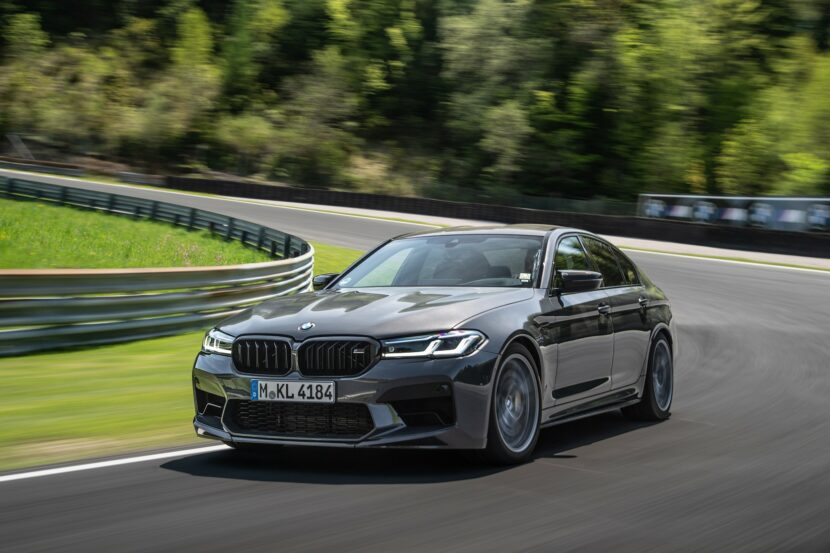With the new BMW 5 Series (G60) officially out, we’re gradually turning our attention to the next-generation M5. Before it arrives next year, the folks over at Carwow decided to revisit the outgoing iteration of the super sedan and line it up against two high-performance sedans. While the F90 uses a good ol’ internal combustion engine and nothing else, the Mercedes-AMG GT 63 S E-Performance and the Porsche Panamera Turbo S E-Hybrid have their V8s coupled to an electric motor.
The upcoming G90-generation M5 will also be a plug-in hybrid V8, but in the meantime, how does the old one stack up against those two speedy PHEVs? With 625 horsepower and 750 Newton-meters of torque, the Competition-spec Bavarian sedan is substantially down on power as the AMG has a whopping 843 hp and 1,400 Nm while the Porsche pumps out 700 hp and 870 Nm.
Because the M5 has a simpler powertrain with an “old-fashioned” V8, it’s by far the lightest car of the bunch. It weighs in at 1,865 kg whereas the GT tips the scales at 2,305 kg. The Panamera is even heavier, at 2,350 kg. We’ll be the first to say it would’ve made more sense to bring the M5 CS to fight the electrified sedans, but as you are about to see, the Competition can hold its own against the two heavyweight luxobarges.
It was always a close fight between the BMW and AMG as the Porsche was substantially slower in all the drag races and the situation was just about the same in the subsequent rolling races. In the brake test from 100 mph, the lighter car took the least amount of runway to come to a full stop, followed by the AMG and the Porsche, which was once again dead last.
It would be great to see these three cars plus a Model S Plaid to show whether the ICE age is about to end in terms of performance supremacy. It’s only a matter of time before sports sedans with large engines will become extinct, replaced by sporty EVs. We already have a few of them around besides the Tesla, such as the Porsche Taycan and the Audi RS E-Tron GT.
Source: Carwow / YouTube






































































